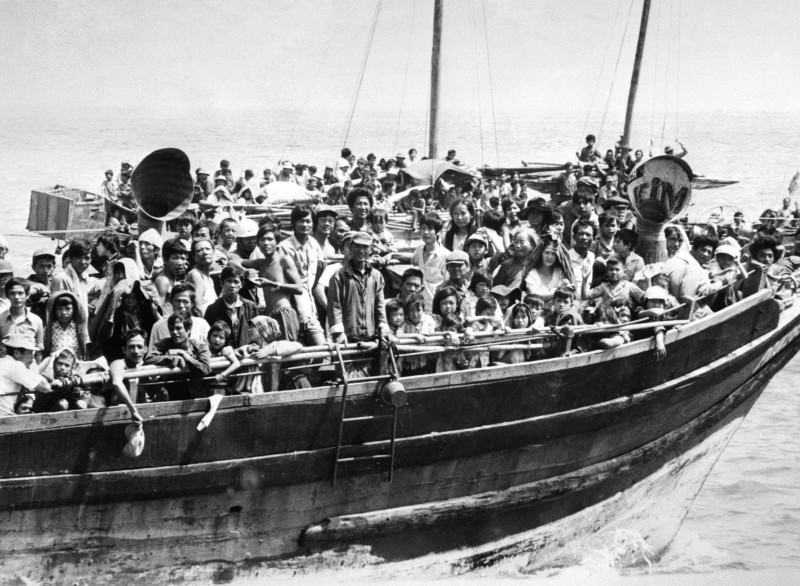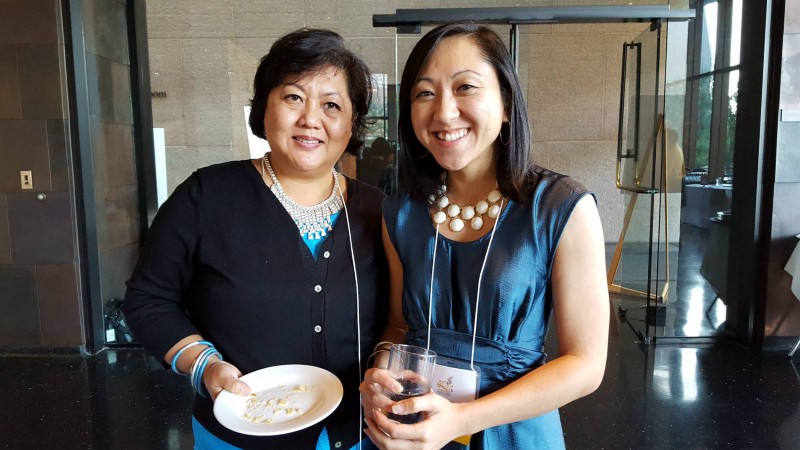This post originally appeared on Medium.com via the National Council of Asian Pacific Americans.

As we enter into Asian Pacific American Heritage Month, we are just closing a season of celebration and remembrance for Southeast Asian American communities. Lao and Cambodian families celebrated the New Year in April, but all of our communities also paused to remember our shared history of trauma and resilience as a refugee community.
Forty-one years ago on April 17th, 1975, the genocidal Khmer Rouge rolled their tanks into Phnom Penh and evacuated the city into the countryside, beginning a four-year reign of terror. Days later on April 30th, the U.S. fell to North Vietnamese forces and pulled out of Saigon, a day called “Black April” for the Vietnamese diaspora in the United States and “Reunification Day” in Vietnam. In Laos, which had been bombed incessantly but secretly by the U.S. for nine years, the communist Pathet Lao rose to power.
These crises created a mass exodus of refugees into Thailand and onto the open sea to Malaysia, Hong Kong, and Indonesia. Over 1.3 million of these refugees were eventually resettled in the U.S. — the largest reception of refugees in U.S. history.
A group of American volunteers founded SEARAC in 1979 as the “Indochina Refugee Action Center” (IRAC) to address the Khmer Rouge-orchestrated famine in Cambodia and to strengthen the capacity of the U.S. to resettle refugees from the region. IRAC/SEARAC played a key role in advocating for the passage of the Refugee Act of 1980 and the establishment of the Office of Refugee Resettlement, helping to develop the country’s first formal refugee resettlement program.
In 1982, IRAC/SEARAC shifted to a Southeast Asian American-led organization as Le Xuan Khoa became executive director, and capable community leaders who had only just arrived as refugees stepped onto the Board of Directors. Khoa grew IRAC/SEARAC’s role as a leading voice for refugee rights and a resource to the U.S. government, acting as both watchdog and advocate as the Southeast Asian refugee resettlement program evolved.
Khoa also recognized the need for strong community-based organizations, known at the time as Mutual Assistance Associations (MAAs), to provide culturally and linguistically-relevant services to newly arriving refugee families, and to advocate for greater access to resources to meet their needs. IRAC/SEARAC helped to build community-based organizations’ capacity through training, technical assistance, and grants.
Throughout the 80s and 90s, our communities struggled to navigate schools and neighborhoods that were plagued by poverty and violence, the product of decades of neglect. SEARAC (renamed in 1993 to reject the colonial overtones of “Indochina”) addressed growing racial tensions in local communities, dispelled myths about Southeast Asian refugee communities, helped policymakers understand the concept of cultural and linguistic competency, and pushed for state and federal resources to empower community-based organizations to develop their own solutions.

Current ED Quyen Dinh (right) with former ED KaYing Yang at SEARAC’s 40 & Forward reception in Minneapolis
Today, SEARAC continues to fortify our tradition as advocates for rights, access, and equity and to uplift the voices of our ever expanding and diverse communities. We know that a third of our students still do not graduate from high school and two thirds do not attend college, so we fight for better schools. Our parents and elders face many barriers to good physical and mental health, so we fight for language access and culturally competent health care. We have seen the fear and pain in the faces of fathers and mothers facing deportation to countries they fled years ago as refugee children, so we fight for humane immigration policies.
We are rooted in our refugee history and remain staunch defenders of the U.S. humanitarian tradition, whether it means opening our arms and hearts to unaccompanied children fleeing the epidemic violence of Central America, or calling for increased refugee admissions for “boat people” from Syria who are currently risking their lives crossing the Mediterranean.
Two years ago, Quyen Dinh became SEARAC’s fourth executive director since 1979, and the first ED who was born in the United States. Across our communities, 1.5 and 2nd generation Southeast Asian American leaders are stepping into leadership roles. In March we held our first-ever “Executive Director Convening” at the National Cambodian Heritage Museum & Killing Fields Memorial in Chicago. Ten young executive directors of Southeast Asian American community organizations came together to connect, reflect, and share ideas. We look with anticipation toward our 50th anniversary as Americans in 2025, with these brave new leaders to take us boldly forward toward our vision of a socially, politically, and economically just society.
The opinions expressed in this article are those of the author and do not necessarily reflect those of the Diverse Elders Coalition.

